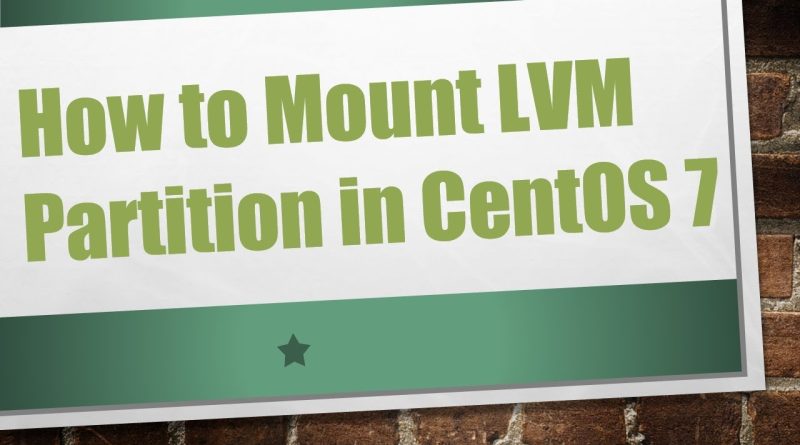How to Mount LVM Partition in CentOS 7
Disclaimer/Disclosure: Some of the content was synthetically produced using various Generative AI (artificial intelligence) tools; so, there may be inaccuracies or misleading information present in the video. Please consider this before relying on the content to make any decisions or take any actions etc. If you still have any concerns, please feel free to write them in a comment. Thank you.
—
Summary: Learn how to mount Logical Volume Manager (LVM) partitions in CentOS 7 with this step-by-step guide. Mounting LVM partitions allows for efficient disk management and allocation of storage space on your CentOS 7 system.
—
In CentOS 7, Logical Volume Manager (LVM) provides a flexible way to manage disk storage by allowing administrators to dynamically allocate and resize partitions. When it comes to mounting LVM partitions, the process is slightly different from mounting regular partitions. Here’s a step-by-step guide on how to mount an LVM partition in CentOS 7:
Identify the LVM Partition
First, you need to identify the LVM partition you want to mount. You can list all the available physical volumes, volume groups, and logical volumes using the following command:
[[See Video to Reveal this Text or Code Snippet]]
Create a Mount Point
Choose or create a directory where you want to mount the LVM partition. For example, you can create a directory named lvm_mount in the root directory:
[[See Video to Reveal this Text or Code Snippet]]
Activate the Volume Group
Before mounting the LVM partition, you need to ensure that the volume group containing the logical volume is active. You can activate it using the vgchange command:
[[See Video to Reveal this Text or Code Snippet]]
Replace <volume_group_name> with the name of your volume group.
Mount the Logical Volume
Now, you can mount the logical volume to the previously created directory using the mount command. Specify the logical volume path and the mount point:
[[See Video to Reveal this Text or Code Snippet]]
Replace <volume_group_name> with the name of your volume group and <logical_volume_name> with the name of your logical volume.
Verify the Mount
To verify that the LVM partition is mounted correctly, you can use the df command to display information about the mounted filesystems:
[[See Video to Reveal this Text or Code Snippet]]
This command will show you all the mounted filesystems, including the newly mounted LVM partition.
Automate Mounting (Optional)
If you want the LVM partition to be automatically mounted every time the system boots, you can add an entry to the /etc/fstab file. Open the file in a text editor and add a line similar to the following:
[[See Video to Reveal this Text or Code Snippet]]
Replace <volume_group_name> and <logical_volume_name> with your actual volume group and logical volume names respectively, and adjust the filesystem type (ext4 in this example) if necessary.
Conclusion
Mounting LVM partitions in CentOS 7 allows for efficient management of disk storage, providing flexibility and scalability to your system’s storage infrastructure. By following these steps, you can easily mount LVM partitions and integrate them into your CentOS 7 environment.
centos 7



